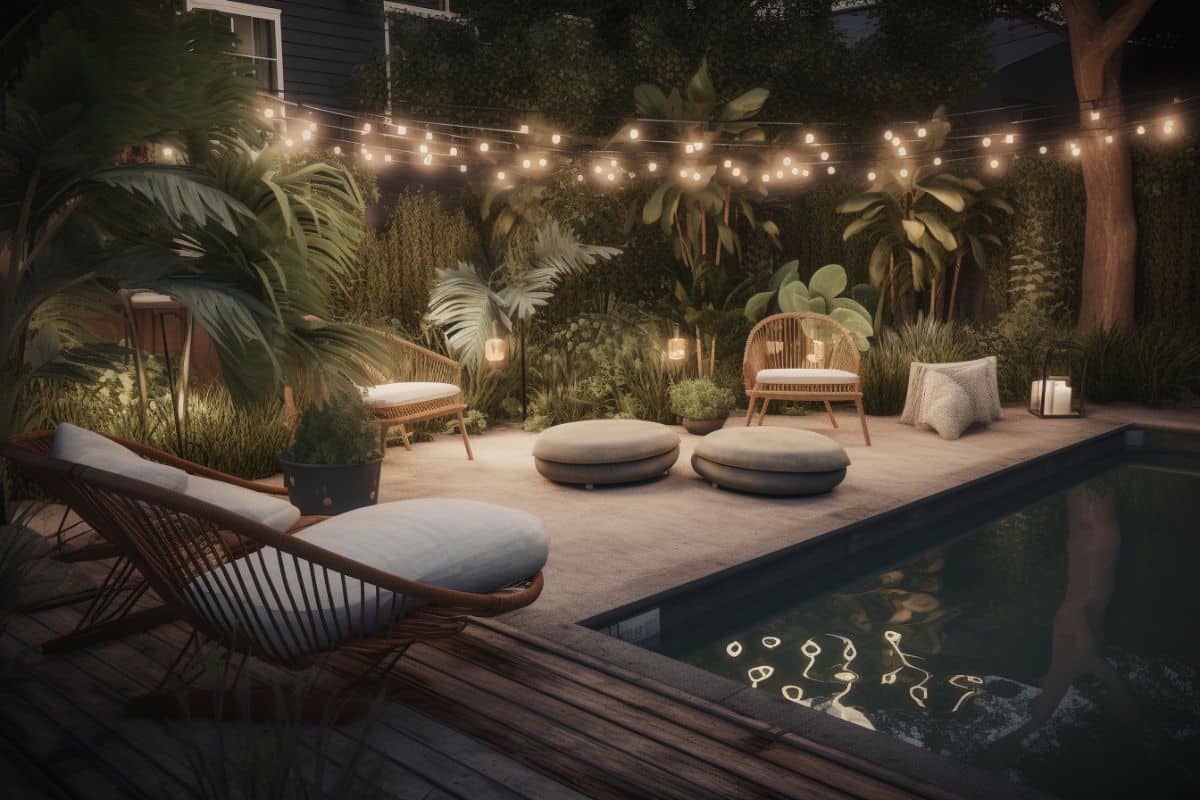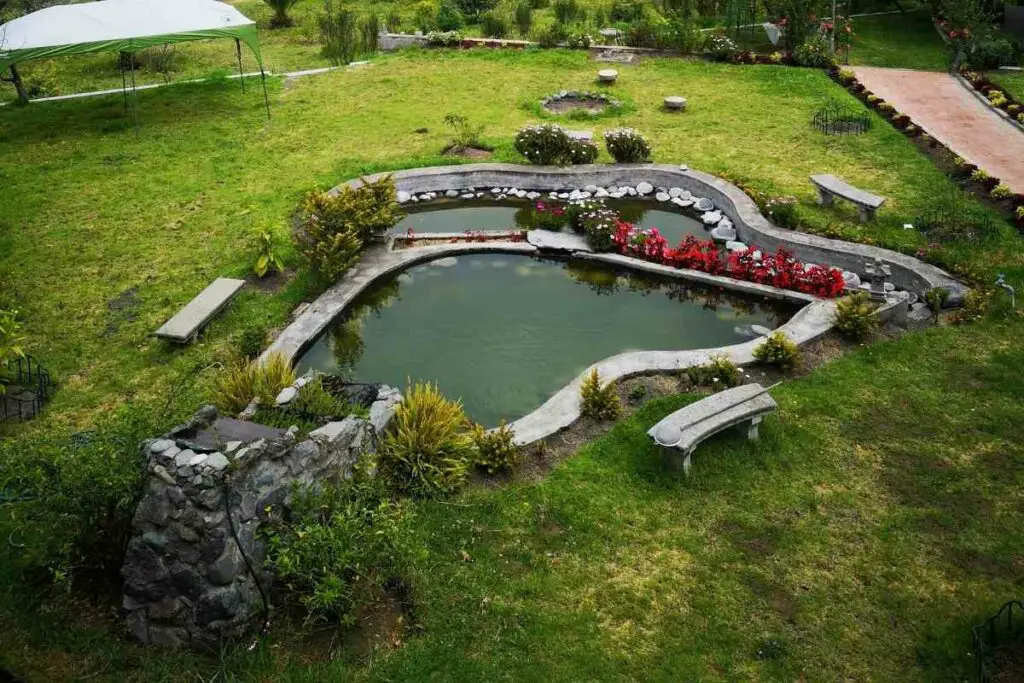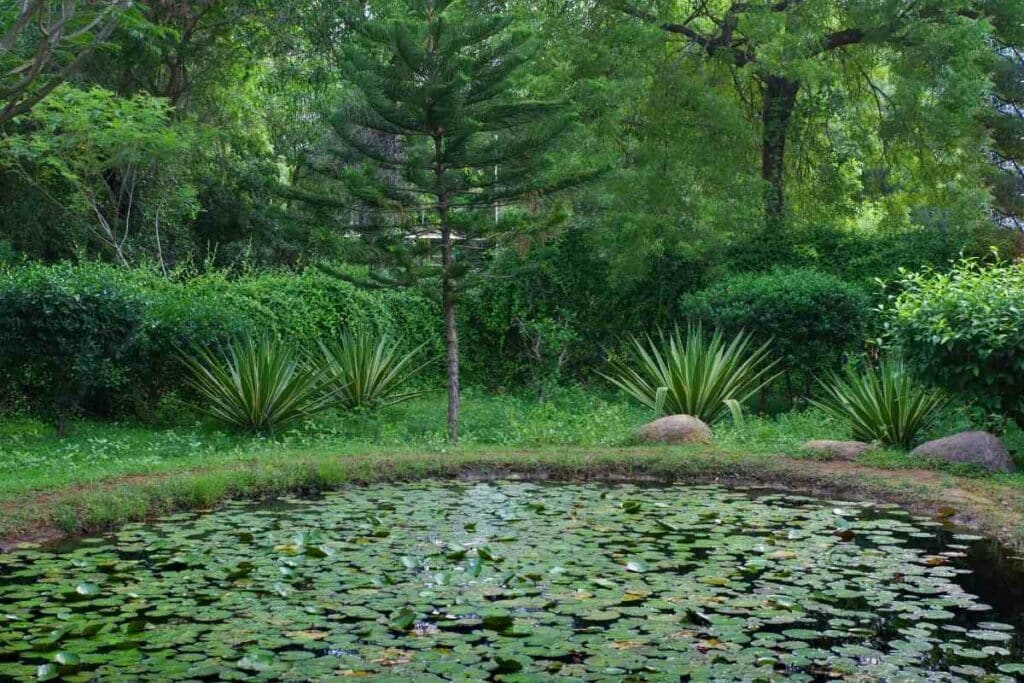Reverence for nature is rooted in Japanese religions such as Buddhism and Taoism. Japanese gardens use minimalistic elements to elicit peace in their guests.
Do you yearn for peace and tranquility?
Do you love nature and simple design?
Japanese gardens are a great way to connect with nature and have many deeper meanings.
Read on to find out more!
How are Japanese Gardens Rooted in Religion?
Gardening in Japan has a wide range.
Some gardens are for the wealthy and span many acres, meticulously groomed.
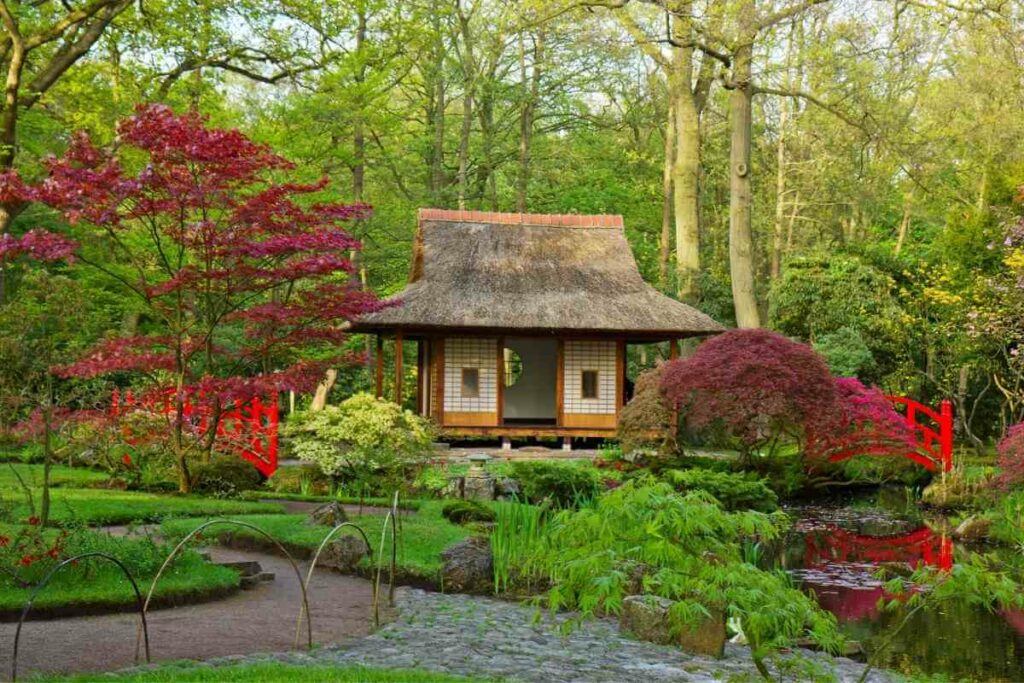
Others are small plots of land designed to be viewed from one angle while you sip tea.
No matter the scope of the garden, the extreme reverence for nature is rooted in Japanese religions.
Buddhism and Taoism inspire Japanese gardens with koi ponds and Japanese Zen gardens.
Water, mountains, and rocks are all utilized in Japanese gardens, which represent mountains and islands of the immortals.
The Eight Immortals are from mythology that can be traced to China. They all live in East Asia on a group of islands with many mountains.
The Shinto religion of Japan sees gods in nature like animals, mountains, rocks, trees, and water. Buddhism is the other major religion in Japan and uses nature as a means of meditation.
Taking a guided tour through a Japanese garden is a great way to learn more about Japanese religion and philosophy through symbolism in the gardens.
How Does Minimalism Play a Part In Japanese Gardens?
Kazuyuki Ishihara is an award-winning garden designer from Japan.
He says that minimalism is the most powerful aspect of Japanese gardens.
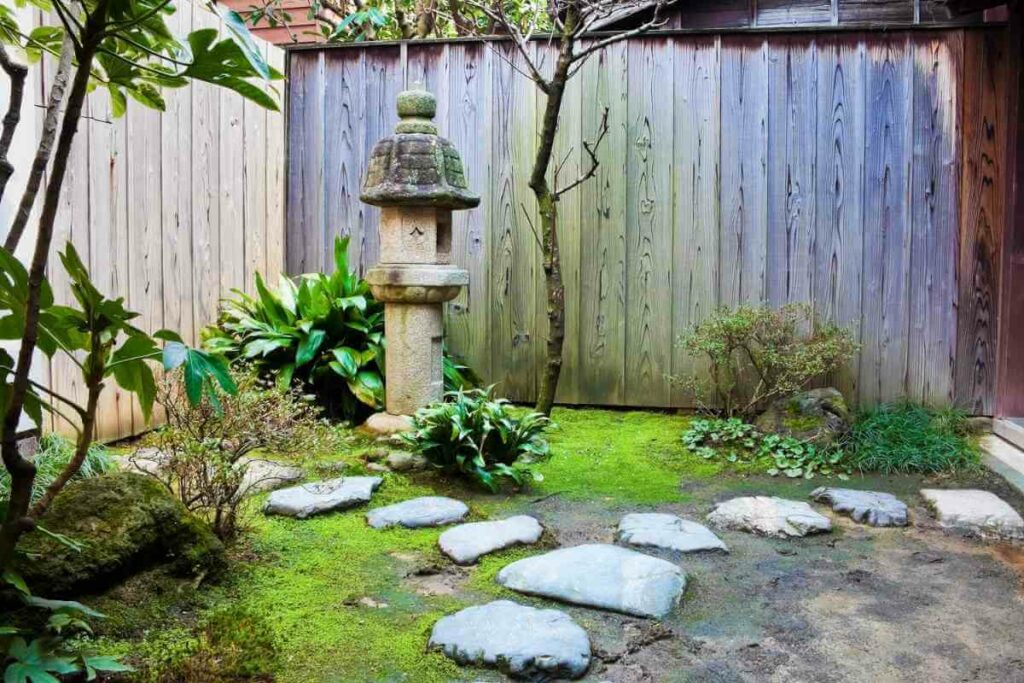
In Japan, even tiny gardens can be enjoyed as they are carefully curated to evoke the desired emotion.
Minimalism is a large part of Japanese life in general, as encapsulated by the now-famous Marie Kondo.
How Do the Native Flora of Japan Affect Japanese Gardens?
The native plants in Japan generally have muted colors.
The gardens are often constructed of vegetation that does not flower.
Because the summer is so hot and humid, moss is particularly popular as it grows very well.
This is in stark comparison to American and European gardens which focus on bright colors.
The soft palettes of Japanese gardens elicit peace and thought.
What is Ziran?
The purpose of Japanese gardens is to create an impression of the natural world. Ziran is Chinese for “naturally; freely; of itself.” This is the idea behind Japanese gardens. The concept was brought to Japan from China via traders.
Due to Ziran, Japanese gardens tend to be idealized scenes, or microcosms, of the natural world.
They make you feel like you are walking into a perfect natural scene.
This is why Japanese gardens can be both large and small.
Even in a tiny garden, you can still mimic natural elements and get the essence of the natural scene.
How Do Symbols Play a Role in Japanese Gardens?
The first Japanese gardens came from the island Honshu, so the natural elements of Honshu are represented in most gardens:
- Rocks represent mountains
- Cascades are mountain streams
- And ponds are lakes
There is typically at least one island in all Japanese gardens to represent the island where the Eight Immortals live. Bridges represent a gateway to eternity and paradise.
Zen gardens use rippled sand to represent water.
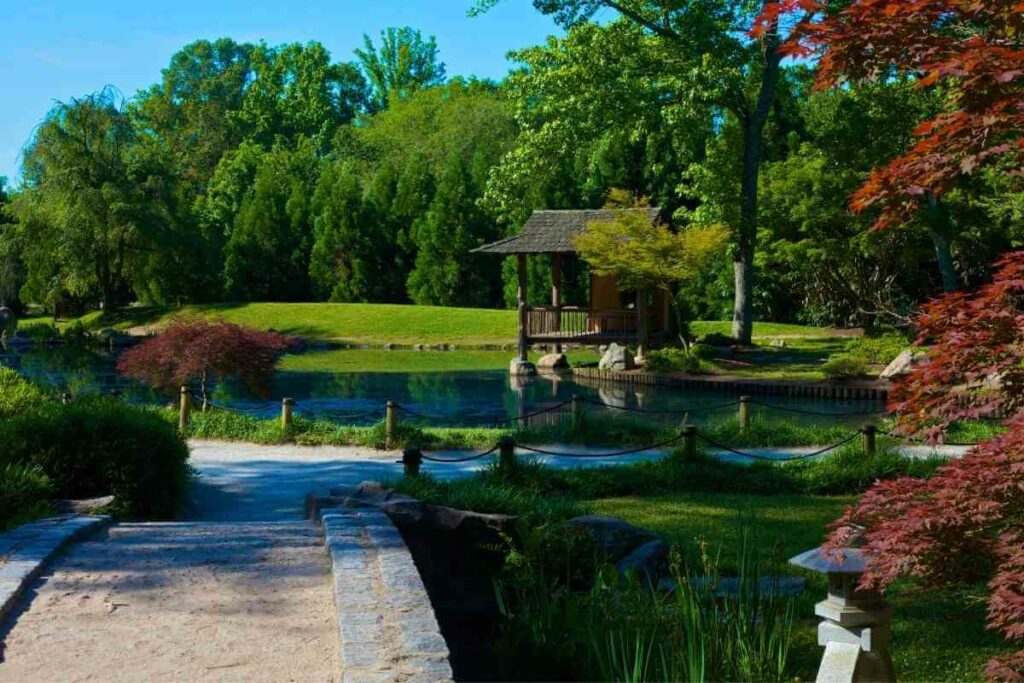
Water is sacred as it represents life and fluidity.
Since Japan is an island, Japanese people rely a lot on the ocean for food and commerce.
What Are Some Practical Elements of Japanese Gardens?
The stone lantern is originally from Buddhist temples, but then became used as lights for paths through tea gardens. Now they are used as decoration.
Another element is the tsukubai, or stone water basin.
These were first used to wash the hands and mouths of garden visitors before tea ceremonies.
The basins were low to the ground, so users had to bow to drink from them.
This was for the purpose of humbling.
What Is the Sakuteiki?
The Sakuteiki is the first known treatise about garden design and dates back to the 11th century. It translates to “Records of Garden Making.”
The book is unillustrated and records the gardening styles of the Heian period, which were previously oral traditions.
It highlights five kinds of gardening:
- Ocean Style
- Mountain Torrent Style
- Broad River Style
- Wetland Style
- Reed Style
What are Karesansui?
Karesansui are dry gardens and are most well-known because of their raked gravel. They are connected to Zen Buddhism.
Sometimes the gardens are made entirely of rocks, or sometimes they are made of white rocks, sand, and greenery to create a contrast.

The sand patterns that express the waves of water are called samon.
Some gardens also have bridges above the sand to further encapsulate the feeling of water.
Final Thoughts
Japanese gardens are meant for contemplation.
Whether you are enjoying a dry garden or a garden lush with moss and water, all Japanese gardens will give you a sense of stillness.
The aspects of Japanese gardens symbolize many different things, such as how islands represent where the Eight Immortals reside.
Japanese gardens have a rich history.
Their roots were brought over via Chinese merchants and traders, and ever since then the Japanese people have made gardening uniquely their own.
Japanese gardens are unlike any others in the world.
Going to your local Japanese garden or tending to one yourself is sure to bring you a special kind of peace.
You May Also Like
- What Should I Put in the Bottom of My Wildlife Pond?
- Backyard Oasis With Pool: Creating a Relaxing Retreat in Your Backyard
- How to Find Pond Leak (Quick Method to Find the Leaks)
- Pool Ledge Lounger – Complete Buyers Guide
- Do Garden Ponds Overflow When It Rains
- How To Fill A Pond With Water (Complete Guide)


